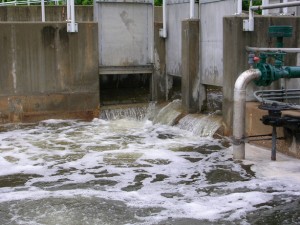Are Water Treatment Plants the Source of Emerging Contaminants
Water treatment plants were designed to clean up rivers and protect the environment from pollutants and human waste. In recent years, these treatment facilities have become responsible for returning cleaned water back into the drinking water supplies for reuse. Unfortunately, according to recent media reports a new type of pollution known as emerging contaminants may have entered the water table.
What are Emerging Contaminants?
Emerging contaminants are new substances. Unfortunately, scientists have not yet determined if these substances are harmful to humans or the environment. It is possible that many of these contaminants are inert, but experts are concerned about one particular contaminant; antibiotic-resistant bacteria, which is flourishing inside water treatment plants around the country.
Antibiotics have become more frequently used in modern society. They are used in agriculture, medicine and other industries. With the widespread use of antibiotics and modern cleaning products, there has been an evolution in bacteria to defy antibiotics. Due to the nature of waste water, the chemicals used to control the growth of bacteria and the treatment process itself, there is concern that water treatment plants may be the primary source of this emerging contaminant.
What Can Be Done?
There is good news, and it is that very thorough water filtration can quite effectively capture these contaminants. A Duluth plant currently being studied uses a fantastic multistage filter. The plant also has a far more exhausted system compared to many treatment plants around the country. The Duluth plant claims that the majority of United States treatment plants don’t have their standard of treatment, so it is likely that antibiotic-resistant bacteria is everywhere with rapid proliferation.
This startling information means that most of the population could be exposed to this bad bacteria by swimming in lakes or rivers that are fed with discharged wastewater or even drinking municipally treated drinking water.
This study is considered to be relatively new and, therefore, further scientific data will need to be considered to determine the exact level of risk. Of course, this process could take a great deal of time, and meanwhile many homeowners will be concerned about the quality of their drinking water. Fortunately, a good quality domestic water filter could add another layer of defense for you and your family.
Domestic water filter systems can not only eliminate potentially harmful elements such as lead and nitrates from drinking water but could also remove emerging contaminants including antibiotic-resistant bacteria. There is a wide selection of domestic water filter options available on the market, from countertop pitchers through to whole house systems. Since the level of risk of emerging contaminants has not yet been confirmed, to ensure complete confidence you may wish to consider a whole house system. This type of system would ensure that you and your family are not exposed to these contaminants during bathing and showering in addition to protection when cooking with and drinking the water.
About The Author:
Greg Scott is President of Valparaiso based Miracle/EcoWater Systems, the premier water conditioning company in Northwest Indiana serving the Lake, Porter and LaPorte County areas. A 3rd generation water treatment professional, Greg grew up in the family owned business started by his grandfather in the late fifties. He has made water treatment his life and under his direction and high-standards, the company’s water treatment experience, knowledge, and products are unrivaled in region.
Back to
